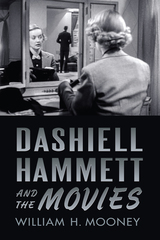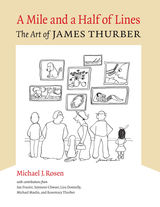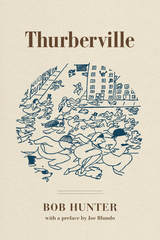3 books about 1894-1961

Dashiell Hammett and the Movies
Mooney, William H
Rutgers University Press, 2014
As the father of the hardboiled detective genre, Dashiell Hammett had a huge influence on Hollywood. Yet, it is easy to forget how adaptable Hammett’s work was, fitting into a variety of genres and inspiring generations of filmmakers.
Dashiell Hammett and the Movies offers the first comprehensive look at Hammett’s broad oeuvre and how it was adapted into films from the 1930s all the way into the 1990s. Film scholar William H. Mooney reveals the wide range of films crafted from the same Hammett novels, as when The Maltese Falcon was filmed first as a pre-Code sexploitation movie, then as a Bette Davis screwball comedy, and finally as the Humphrey Bogart classic. He also considers how Hammett rose to Hollywood fame not through the genre most associated with him, but through a much fizzier concoction, the witty murder mystery The Thin Man. To demonstrate the hold Hammett still has over contemporary filmmakers, the book culminates in an examination of the Coen brothers’ pastiche Miller’s Crossing.
Mooney not only provides us with an in-depth analysis of Hammett adaptations, he also chronicles how Hollywood enabled the author’s own rise to stardom, complete with a celebrity romance and a carefully crafted public persona. Giving us a behind-the-scenes look at the complex power relationships, cultural contexts, and production concerns involved in bringing Hammett’s work from the page to the screen, Dashiell Hammett and the Movies offers a fresh take on a literary titan.
[more]

A Mile and a Half of Lines
The Art of James Thurber
Michael J. Rosen
The Ohio State University Press, 2019
Humorist, cartoonist, writer, playwright. James Thurber was to the twentieth century what Mark Twain was to the nineteenth. At one point, his books were the most read of any American in the world. His work could be found anywhere—from the pages of the New Yorker to the pages of children’s books, from illustrated advertisements to tea towels and dresses. Now, in celebration of the 125th anniversary of Thurber’s birth, A Mile and a Half of Lines: The Art of James Thurber is a long overdue introduction and reintroduction to James Thurber and the artwork that fundamentally changed American cartoons.
Including some 260 drawings, this collection is the first comprehensive focus on his work as an artist, a cartoonist, and an illustrator. With commentary from a host of preeminent cartoonists and writers, including Ian Frazier, Seymour Chwast, and Michael Maslin, A Mile and a Half of Lines celebrates the significance of Thurber’s spontaneous, unstudied, and novel drawing style that not only altered the nature of American cartooning but also expanded the very possibilities of an illustrated line. Coinciding with the first major retrospective of Thurber’s art presented by the Columbus Museum of Art in 2019, A Mile and a Half of Lines showcases both classic Thurber as well as visual material never before seen in print.
Including some 260 drawings, this collection is the first comprehensive focus on his work as an artist, a cartoonist, and an illustrator. With commentary from a host of preeminent cartoonists and writers, including Ian Frazier, Seymour Chwast, and Michael Maslin, A Mile and a Half of Lines celebrates the significance of Thurber’s spontaneous, unstudied, and novel drawing style that not only altered the nature of American cartooning but also expanded the very possibilities of an illustrated line. Coinciding with the first major retrospective of Thurber’s art presented by the Columbus Museum of Art in 2019, A Mile and a Half of Lines showcases both classic Thurber as well as visual material never before seen in print.
[more]

Thurberville
Bob Hunter
The Ohio State University Press, 2017
James Thurber’s Columbus was not today’s Columbus—or even yesterday’s. It was a Columbus he both knew and created, a place perched on the fringe of reality and the fringe of his imagination. It is the place Bob Hunter revisits in Thurberville, a book where the author separates truth from fiction and identifies what parts of the famous humorist’s hometown of 180,000 exist in the burgeoning metro area of more than two million today.
Thurber’s Columbus was a wild and crazy place, a city full of fascinating and sometimes peculiar characters, many in his own family. Because of the widespread popularity of his stories, that was also the Columbus that many of his readers around the world came to know.
Thurberville chronicles those characters and explores that world. But it also examines the real city where Thurber struggled and then blossomed as a college student, worked as a newspaper reporter and a press agent, and achieved international fame as a humorist and cartoonist after he left town, in part by writing about the subjects he left behind.
Much of Thurber’s best work was cultivated by experiences Thurber had in Columbus and in his dealings with family, friends, teachers, and acquaintances there. They are worth a revisit and, in some cases, an introduction.
Thurber’s Columbus was a wild and crazy place, a city full of fascinating and sometimes peculiar characters, many in his own family. Because of the widespread popularity of his stories, that was also the Columbus that many of his readers around the world came to know.
Thurberville chronicles those characters and explores that world. But it also examines the real city where Thurber struggled and then blossomed as a college student, worked as a newspaper reporter and a press agent, and achieved international fame as a humorist and cartoonist after he left town, in part by writing about the subjects he left behind.
Much of Thurber’s best work was cultivated by experiences Thurber had in Columbus and in his dealings with family, friends, teachers, and acquaintances there. They are worth a revisit and, in some cases, an introduction.
[more]
READERS
Browse our collection.
PUBLISHERS
See BiblioVault's publisher services.
STUDENT SERVICES
Files for college accessibility offices.
UChicago Accessibility Resources
home | accessibility | search | about | contact us
BiblioVault ® 2001 - 2024
The University of Chicago Press









